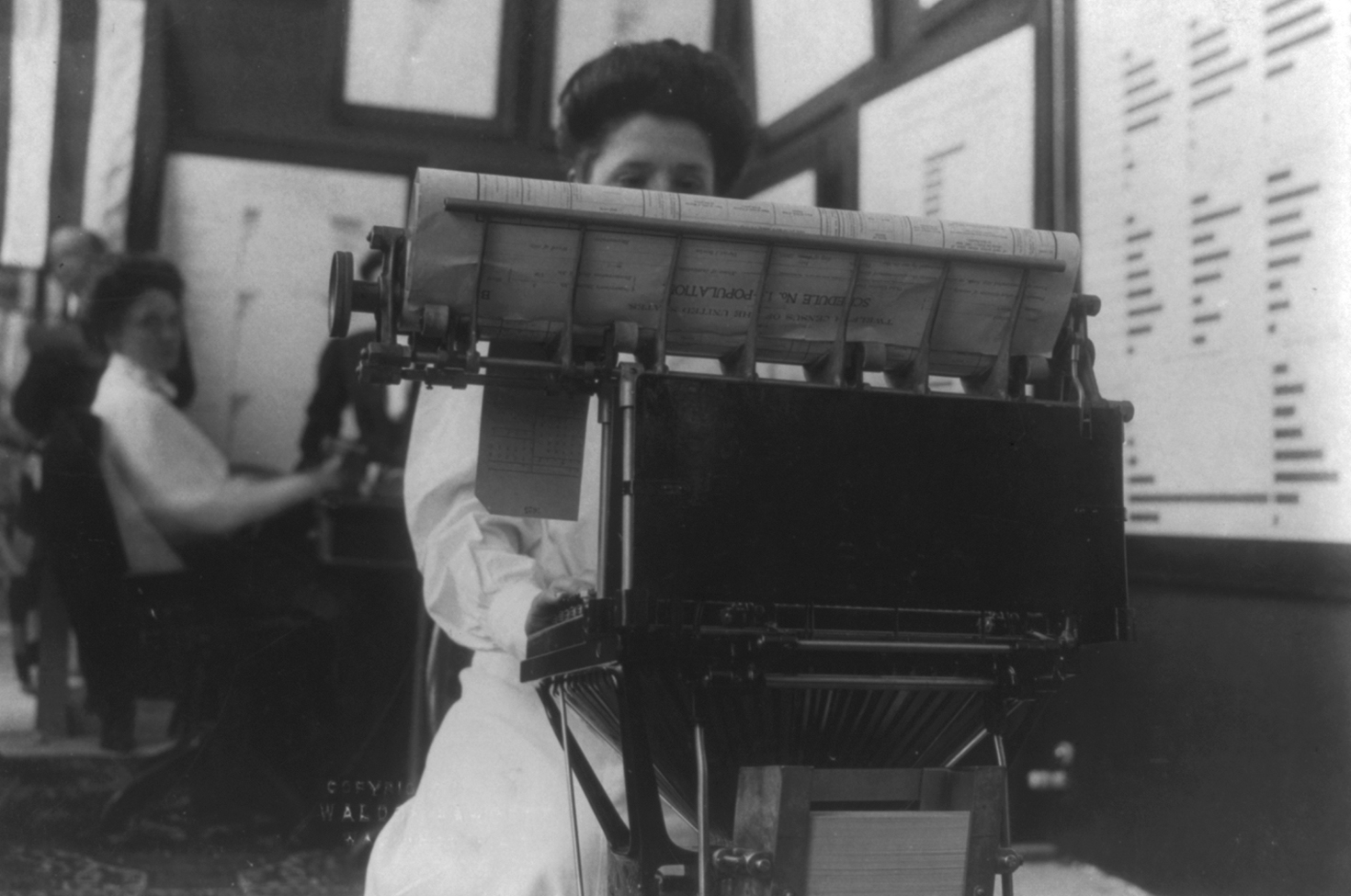
U.S. Census Bureau operators, c. 1908. Library of Congress, Prints and Photographs Division.
• The history of the census. (NewYorker.com)
• The story of Angela, the first African woman recorded to live in Virginia. (The Washington Post)
• How to remember Emmett Till: “As Till’s story is passed down through generations, its plot is shaped by the conditions of remembrance in the Delta as much as by the distant facts of 1955. Now the story is in the hands of the legislators, county supervisors, funding boards, nonprofit organizations, private foundations, small-town mayors, anonymous citizens, ex-cons, and midlevel bureaucrats who oversee the new commemorative works. There is a world of controversy, patronage, nepotism, and enduring racism behind the surface of those historical markers.” (Places Journal)
• A history of royal mistresses. (Jezebel)
• “Admittedly, Lucretius never explicitly states that ‘the Earth is flat.’ You need to understand the context of his ideas to realize that he believes it.” (Aeon)
• “According to archaeologists, Wari breweries—largely managed by women—played a major role in spreading the empire’s influence across diverse communities throughout Peru during its height between 450 and 1000.” (Popular Science)
• The “radical, bizarre, and often astonishingly modern ideas” of Charles Fourier. (Public Domain Review)
• On valkyrjur and the white supremacists who reference them. (Medievalists.net)
• Meet Brownie Mary. (Bon Appétit)
• Photographs of Walt Whitman’s New Jersey. (Library of America)
• The “West Cure.” (JSTOR Daily)
• “Neanderthals may have trapped golden eagles 130,000 years ago.” (Science)
• This week in obituaries: John Singleton, the first female staff photographer, an abstract artist, the Bush Bard, and the “Goddess of Water.”